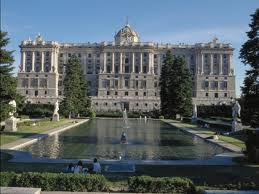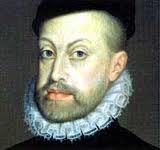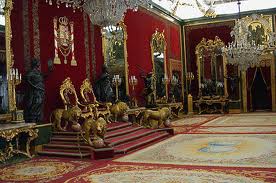Madrid is a city rich in history, and people who for any one of a number of reasons are coming to spend some time in the city, will need to find a place to live. Be it long term or short term, the answer to finding Flats rental in Madrid can be found at ShMadrid. the number solution for finding furnished apartments and studios in Madrid.
As you would expect from one of Europe’s leading cities, the history of Madrid goes back a very long time, with the first sign of any civilizations were living there been traced back to prehistoric times, evidenced by excavations that have been discovered on the banks of the River Manzanares, some of which can even be viewed today In the cities National Archaeological Museum.
Later evidence shows the Romans had a strong presence in the around ancient Madrid, all the definite evidence of any form of foreign influence was when the “Royal Palace” was apparently occupied by the Moors way back in the tenth century, remaining in their control for almost 100 years until it was recaptured by King Alfonso VI of Spain during in victorious advance towards the ancient city Toledo.
 Since then, the city of Madrid has remained in Spanish hands more or less exclusively and in the beginning of the 14th century, the reigning King, Fernando V established his court there.
Since then, the city of Madrid has remained in Spanish hands more or less exclusively and in the beginning of the 14th century, the reigning King, Fernando V established his court there.
Sometime during the 17th century, during the reign of Enrique II the city of Madrid was destroyed almost entirely by fire, as was as most of the buildings were fairly ramshackle wooden structures. However, Enrique II’s forward thinking son, who went by the name of; believe it or not, Enrique III had the entire city rebuilt, this time of brick, with even some of the buildings remains standing to this day.
Following the footsteps of his father, Enrique VI bestowed a total of “Very Noble and Loyal” on the city to celebrate his wedding to Doña Juana of Portugal.
The period of that of rapid growth that Madrid went through during that period was briefly halted when a long, drawn out war broke out in Spain known as the war of Communities that took place during the early part of the 16th century.
However, there was no stopping Madrid and when King Felipe II, decided to move the Imperial Court to Madrid in 1561 Madrid was finally recognised as the nation’s capital
During the 18th century Madrid experienced a rapid spurt in its development, with city gates and a number of bridges over the River Manzanares being built to make access between both sides of the river community that much easier. With the cities spreading out what rapidly, a whole new wave of building went on in its center, most prominently the Royal Palace situated in the Plaza de Oriente square.
 Carlos III of Spain, a great visionary who reined during the latter part of the 18th century, encouraged the tremendous inroads in the building “boom “that occurred in the city during that time. On Carlos III’s watch the Royal Palace was finally completed after much procrastination, as well as a considerable number of other projects such as the Royal Theatre, the Ministry of Finance (Hacienda) Building, the Botanical Gardens, the Natural Science Museum, the Casa de Cisneros, the General Hospital, the College of San Carlos, the Royal Mint, the Casa de los Geranios and the fountains of Cibeles, Neptune and Apollo during the close to half century when Carlos II reigned supreme.
Carlos III of Spain, a great visionary who reined during the latter part of the 18th century, encouraged the tremendous inroads in the building “boom “that occurred in the city during that time. On Carlos III’s watch the Royal Palace was finally completed after much procrastination, as well as a considerable number of other projects such as the Royal Theatre, the Ministry of Finance (Hacienda) Building, the Botanical Gardens, the Natural Science Museum, the Casa de Cisneros, the General Hospital, the College of San Carlos, the Royal Mint, the Casa de los Geranios and the fountains of Cibeles, Neptune and Apollo during the close to half century when Carlos II reigned supreme.
When Carlos III, passed on, the reins were handed to his son Carlos IV, who also had his plans to continue the construction of the city, with his larger single claim to fame being the building of the Buenavista Palace, which today houses the Armed Forces Ministry as well as a number of the city’s most famous mansions, including the Dukes of Liria in Princesa Street he Count of Altamira in Calle de la Flor.
During the early days of the 19th-century the more than 100 years of tranquility that Madrid had enjoyed was shattered when a popular revolt that began by agitators in the Puerta del Sol region of the city spread to such an extent that it initiated, what became known as Spain’s first War of Independence. Fighting was especially tough around Madrid and several buildings were destroyed. At the same time the French, sensing an opportunity to catch an enemy on the hop, decided that now was the time to make an attempt to invade Spain, which with lead to a major war between the French under the guidance of Napoleon Bonaparte and an Anglo Hispanic army led by the famous British Gen Wellington . Eventually Wellington prevailed, and the French were driven out of Madrid and eventually all of Spain.
After both of these issues were finally settled, the city of Madrid could continue its expansion, with the first notable addition being the renowned University of Alcalá de Henares being transferred to the city, with its name was changed to the Universidad Complutense de Madrid.
With the city growing so rapidly, significant changes had to be made to infrastructure and is gradually implemented within the building of the Canal de Isabel II (Madrid’s as well as the foundation of Madrid’s gas lighting system which was inaugurated in the mid-19th century.
Since then Madrid’s urban progress remained at a similar pace, with no major historic disruptions, apart from the upheavals of the 1930s and 40s, caused first by the Spanish Civil War and later by the Second World War.
Today Madrid has grown to become one of Europe’s most exciting cities, attracting visitors from all over the world. If you want to spend some time in Madrid in comfort and with your own front door, why not check out the possibilities that Short term rental in Madrid or monthly rental for student in Madrid will provide you. All you need to do is contact ShMadrid. You will be surprised how soon they will soon come up with solutions for which Madrid apartments for rent to best suit your needs.






